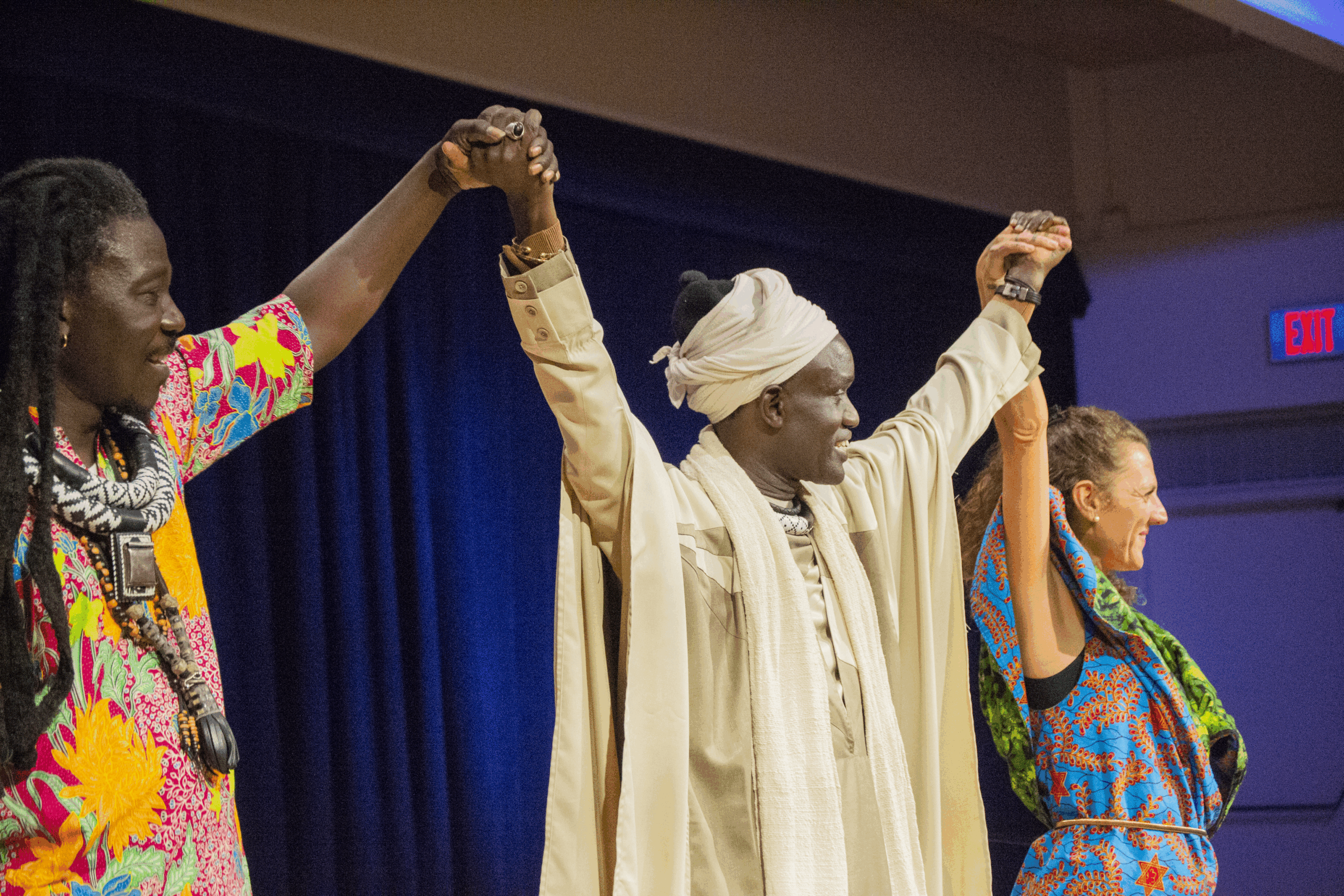Performer Ndiaye visits for third Bowdoin show
October 17, 2025
 Jared Scott
Jared ScottLast Wednesday evening, students, faculty, staff and community members filled Kresge Auditorium for a captivating performance of “Aida, celle qui reviendra,” which translates to “Aida, She Who Will Return.”
This performance marked the third visit to Bowdoin by storyteller and performer Boubacar Ndiaye. During his previous appearances, Ndiaye presented “Voyage sans visa” (“Voyage Without Visa”), a moving collection of narratives performed in French that explored the experiences of migration from Africa to France, the United States and beyond.
The production was a collaborative effort between the Africana studies, history, music, Romance languages and literature and theater and dance departments and was supported by the Blythe Bickel Edwards Fund. Students and faculty across disciplines played an active role in organizing and supporting the event, including a written English translation provided to audience members to accompany the live performance.
With “Aida, celle qui reviendra,” Ndiaye once again invited audience members to engage with powerful themes of identity, displacement and return, using music, movement and storytelling.
Associate Professor of Romance Languages and Literatures Katherine Dauge-Roth shared her appreciation for Ndiaye’s oral performance.
“To be able to really understand how oral tradition works, you really need to have an experience with storytellers, with other people who are skilled in the art of oral communication and oral tradition,” Dauge-Roth said.
On stage, Ndiaye was the storyteller, Baye Cheikh Mbaye was on percussion, kora and vocals and Barbara Lamothe was on the violin and vocals. The three worked together to portray true stories based on the life of Ndiaye’s sister Aida, who passed away while giving birth.
In his storytelling, Ndiaye embodied several characters, including performing from the perspective of a woman.
“So, this story, I [share] it to give homage to her but also for all of the women who are strong but also fell because of bad men,” Ndiaye said through an interpreter during the Q&A.
Throughout the performance, Ndiaye included many cultural elements, including a demon that comes out of Laman, the love interest in the story, to symbolize domestic violence towards the main character.
“In Senegal, when someone does wrong, they say he’s possessed and that it is not him,” Ndiaye said through an interpreter. “And then through that, there are rituals to remove that, and it’s usually done by women, and their wives and mothers are there to help remove that.”
Other culturally specific depictions included the feelings of women who were only allowed to interact with other women when at the well. For these women, this well is the center of peace and happiness.
“Fortunately, there was the well,” Ndiaye said through the voice of Aida. “This well allowed me to go out every day. Before dawn, I would wake up alone, take my calabash, leave my hut and walk through the sleeping village.”
While at the well, these women would find ways to make the most of their time away from their husbands.
“We sang, we danced and each of the women stood in the middle of the circle,” Ndiaye said in character. “We could leave our troubles behind because we could talk about anything without taboos.”
Bringing deeply rooted cultural symbolism to an audience unfamiliar with Senegalese traditions required careful attention not only to performance but also to communication. Every gesture, rhythm and phrase carried layers of meaning that could easily be lost without translation.
To make sure those connections were felt in full, the performance relied on collaboration beyond the stage itself. Francophone Studies students were selected to translate the script into English for non-French speakers to follow.
Andy Mugisha ’28 helped translate the script as well as Ndiaye’s Q&A section. Translating live was not new for Mugisha, but it did require some quick thinking.
“Honestly, [Nassiratou Ali Djibo ’28 and I] just got up there and translated,” Mugisha said. “We looked at each other to gauge what he was talking about. If it was a more sensitive topic, we let him finish up and then go back and forth.”
For Mugisha, the translation process emphasized how important language is to cultural understanding and how powerful it can be to bring audiences into a story that might otherwise remain distant.
“I think definitely hearing about other cultures and being exposed to these stories is very important to not only hear them live but also with the whole element of instruments and the dancing, I think it also brings life to the story,” Mugisha said.

Comments
Before submitting a comment, please review our comment policy. Some key points from the policy: